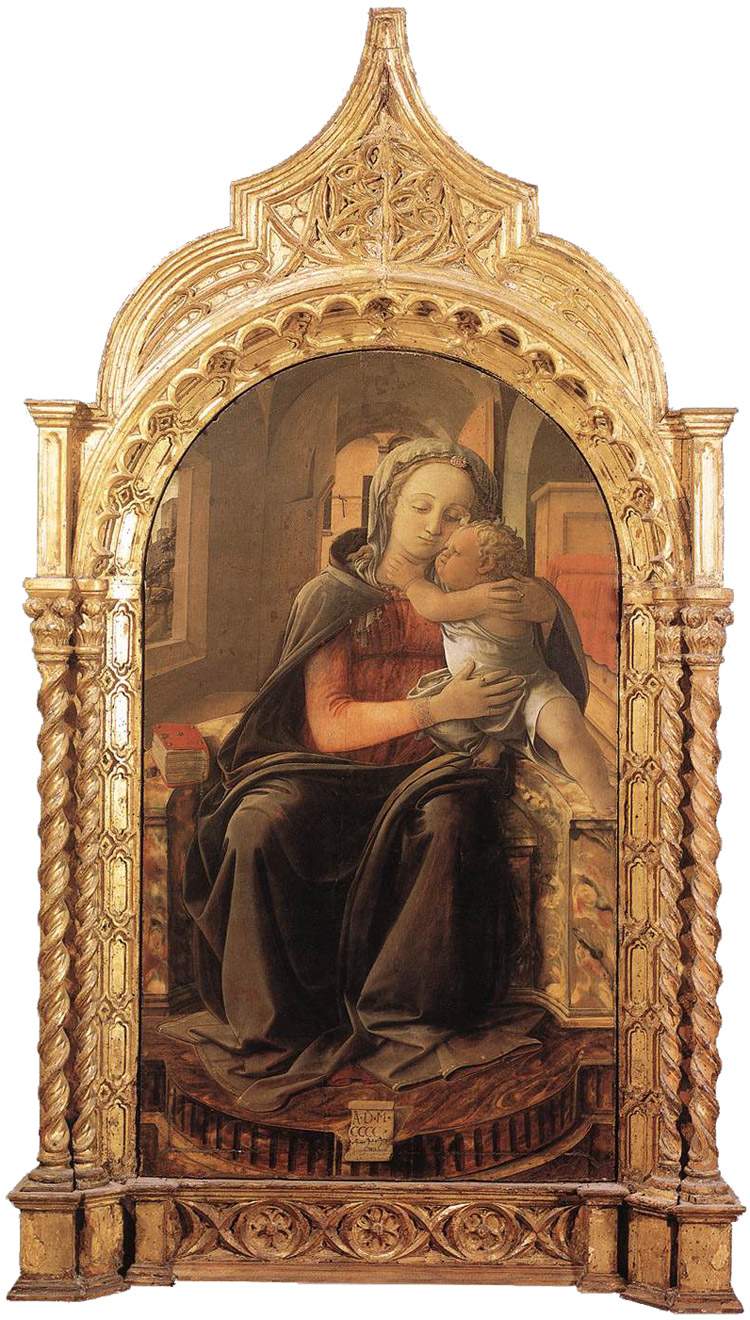On view at the Galleria Nazionale d’Arte Antica of Palazzo Barberini in Rome, from November 17, 2017 to February 18, 2018, is the exhibition Altro Rinascimento. The Young Filippo Lippi and the Madonna of Tarquinia: an exhibition that investigates the early production of one of the great masters of the Renaissance, Filippo Lippi (Florence, 1406 - Spoleto, 1469) on the occasion of the centenary of the discovery of the Madonna of Tarquinia, an important work by the Tuscan artist that for the occasion is compared with other paintings by the young Filippo Lippi and additional works by Masaccio and Donatello.
The Madonna of Tarquinia, a work dated 1437 and fundamental to Filippo Lippi’s career, was identified in 1917 by Pietro Toesca in Tarquinia: the painting is important in that it well documents the transition between the artist’s very early manner, close to Masaccio, and the innovations introduced by Donatello in the 1430s. “Through this fundamental experience,” we read in the presentation of the exhibition at Palazzo Barberini, “Fra Filippo matured a personal style, characterized by elegant and sophisticated line, by iridescent and sensual colors, an ornate and grating painting, to borrow the definition given by the humanist Cristoforo Landino in 1481.”
The first section of the exhibition is devoted precisely to the Madonna of Tarquinia, her identification and, of course, Pietro Toesca. The second section delves into the figure of the commissioner, Cardinal Giovanni Vitelleschi, archbishop of Florence, who is portrayed in a woodcut from Paolo Giovio’s Elogia virorum bellica virtute illustrium: other works commissioned by the cardinal are presented, namely a panel by Bartolomeo di Tommaso da Foligno and a silver reliquary. The third and final section presents the context within which Filippo Lippi painted the Madonna of Tarquinia: space is thus given to works from Filippo Lippi’s early days and those of other artists of the time.
The exhibition, curated by Enrico Parlato, can be visited during the museum’s opening hours: Tuesday through Sunday from 9 a.m. to 7 p.m., last admission at 6 p.m. (ticket office closes one hour before). Closed December 25 and January 1. Admission is with museum ticket (also valid for the National Gallery of Palazzo Corsini): full price 12 euros, reduced 6 (for EU citizens between 18 and 25 years old), free for under 18, disabled and accompanying person, ICOM members, tour guides and interpreters on duty, journalists, school teachers, MiBACT employees, students and teachers of Architecture, Humanities (archaeological or historical-artistic address), Conservation of Cultural Heritage and Education Sciences, Academies of Fine Arts. The catalog is published by Officina Libraria and includes essays by the curator and by Walter Angelelli, Carlo Bertelli, Giovanna Bertelli, Pietro Bertelli, Livia Carloni, Laura Cavazzini, Keith Christiansen, Elena Ciliberto, Andrea G. De Marchi, Giovanni Insolera, Anna Modigliani, Giovanna Martellotti, Chiara Merucci, Maria Milazzi, Benedetta Montevecchi, Clare Robertson, Cinzia Silvestri, and Carl Strehlke. Hashtags to use on social media: #PalazzoBarberini #FilippoLippi #MadonnadiTarquinia #AltroRinascimento. Info at www.barberinicorsini.org.
Image: Filippo Lippi, Madonna of Tarquinia (1437; tempera on panel, 114 x 65 cm; Rome, Galleria Nazionale d’Arte Antica di Palazzo Barberini)
 |
| At Palazzo Barberini, an exhibition-tribute to Pietro Toesca on Filippo Lippi's Tarquinia Madonna |
Warning: the translation into English of the original Italian article was created using automatic tools. We undertake to review all articles, but we do not guarantee the total absence of inaccuracies in the translation due to the program. You can find the original by clicking on the ITA button. If you find any mistake,please contact us.